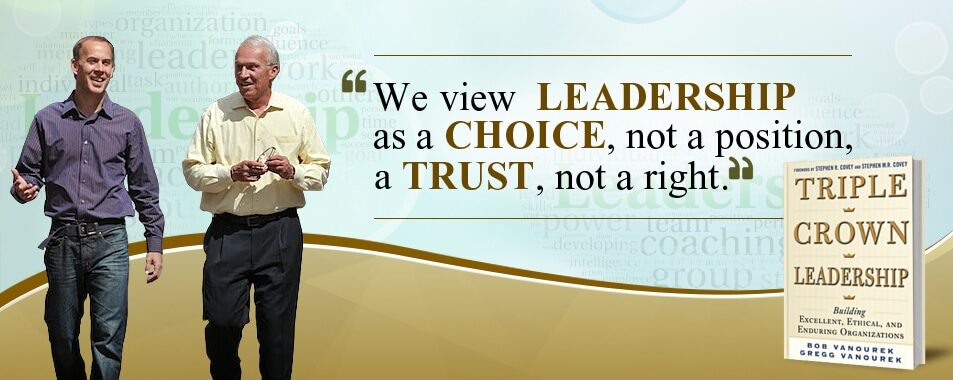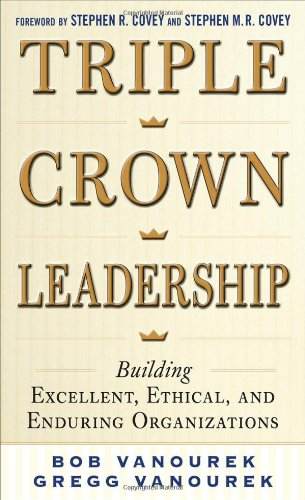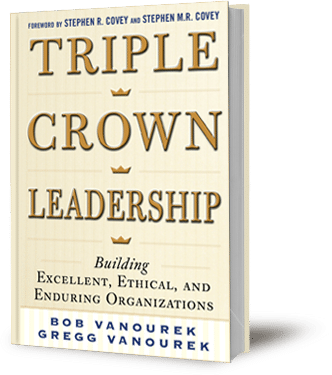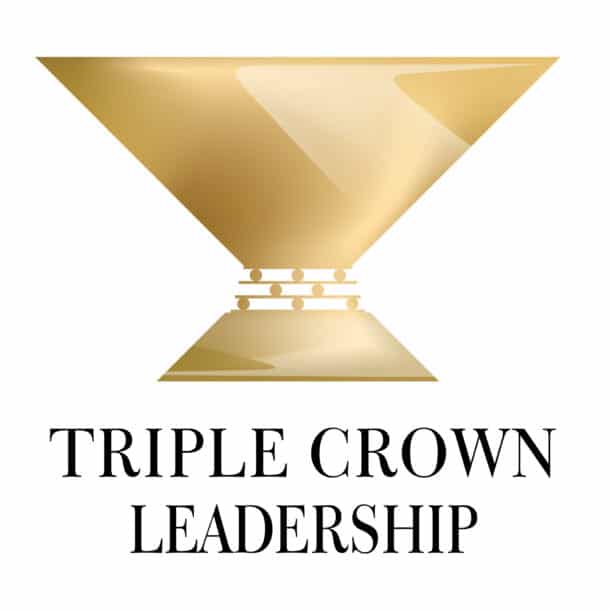
Develop Your Leadership
Do you want to improve your leadership? Get better results–the right way? Achieve exceptional results, ethically, and consistently over time?
We champion a better brand of leadership–triple crown leadership–that builds excellent, ethical, and enduring organizations–ones that achieve exceptional positive impacts for their stakeholders ethically and sustainably.
We provide leadership development services to organizations and teams through training, courses, workshops, speaking, and coaching.
Our book, Triple Crown Leadership: Building Excellent, Ethical, and Enduring Organizations, draws upon our own experience, extensive research, and interviews with leaders in 61 organizations in 11 countries. This book was a winner of the International Book Awards and has been called “the best book on leadership since Good to Great.”

Leadership Derailers Assessment
Take this assessment to identify what’s inhibiting your leadership effectiveness. It will help you develop self-awareness and identify ways to improve your leadership.
Tools & Resources for You:
- Leadership Derailers Assessment to help you identify what’s inhibiting your leadership effectiveness
- Traps Test (Common Traps of Living) to see what’s inhibiting your happiness and quality of life
- Personal Values Exercise to help you determine and clarify what’s most important to you
- Alignment Scorecard to help you assess your organization’s level of alignment
- Quality of Life Assessment to help you identify your strongest areas and the ones that need work
- Goals Guide: Best Practices in Setting and Pursuing Goals, a 30-page guide to walk you through this important process
- Goal-Setting Template to help you set goals you can achieve based on best practices (beyond SMART goals)
We Can Help You:
- Develop clarity on your personal leadership approach and a strong foundation of self-leadership
- Clarify the aims of your leadership–and your top leadership quest
- Recruit and develop great people
- Set and activate an inspiring shared purpose, values, and vision
- Flex your leadership approach to the situation and people
- Build a great culture
- Align your team for sustainable high performance
- Avoid leadership derailers and organizational breakdowns
- Lead through change and crisis
- Develop better ethical decision-making
We help you achieve sustainable high performance by developing excellent leaders, building a dynamic culture, and pointing the organization toward a higher purpose with positive social impact.
We’re long-time practitioners of leadership across industries and sectors. And we’ve done the research and developed highly effective and engaging teaching and training materials.
We know you want to be an exceptional leader who guides your team to sustainable high performance. To do that, you need proven practices.
Book a meeting so we can learn about your context and see if we can help. Invest in your leadership development and your team.
Learn more:
- Take our Leadership Derailers Assessment to see what’s inhibiting your leadership effectiveness.
- Check out our Workshops and Courses, including training, retreats, and coaching.
- Do our Personal Values Exercise to help you identify what’s most important in your life and leadership–and then build your life and work around those values.
- Buy the Book, a winner of the International Book Awards, for you and/or your team.
- View our Speaking page, including sample videos, speaking topics, and testimonials.

Raise Your Leadership Game
We help address the following leadership and organizational problems:
- underperformance
- disengagement
- workers not feeling connected to a larger purpose
- teams lacking cohesion
- leaders who want to take their leadership to the next level
We can help you avoid these challenges and operate at peak performance. You’ll learn advanced leadership practices for creating excellent, ethical, and enduring organizations: the “triple crown” of leadership. Use our five advanced leadership practices. You’ll see the results in your bottom line.
Our book, Triple Crown Leadership: Building Excellent, Ethical, and Enduring Organizations, is a winner of the International Book Awards and was called “the best book on leadership since Good to Great.”

Alignment Scorecard
When organizations aren’t aligned, it can reduce performance dramatically and cause frustration and dysfunction. With this Alignment Scorecard, you can assess your organization’s level of alignment and make plans for improving it.
Develop your leadership.
Start today on your new leadership quest.

Work with Us to Develop Your Leadership
Courses & Workshops
My interactive courses and workshops help transition-seekers, career-changers, mid-career professionals, and others. Invest in your personal and professional development through programs in life design, personal development, traps of living, leadership, and more. Invest in yourself and your future.
Speaking
Book me for your next event. I’ll share powerful insights and actionable tools in talks on life design, personal development, and leadership. I create and deliver custom speaking engagements for companies, nonprofits, associations, conferences, executive programs, schools, and universities. Invest in your people.
Coaching
Wondering what’s next? Rethinking your current path? Lacking clarity and direction? Seeking more? I’ll serve as your trusted guide, helping you go from where you are to where you want to go. Coaching can help you identify issues and work through them with the support of a trusted guide. Invest in yourself and invest in your future by crafting a life by design.
Leadership Development Resources for You

Triple Crown Leadership
Triple Crown Leadership: Building Excellent, Ethical, and Enduring Organizations

LIFE Entrepreneurs
LIFE Entrepreneurs: Ordinary People Creating Extraordinary Lives

TEDx
Talk
TEDx Talk: "Discover Mode: Finding Your Quest"

Crafting Your Life & Work Course
The Crafting Your Life and Work Course
Dive in Deeper
Leadership Derailers Assessment
Take this assessment to identify what’s inhibiting your leadership effectiveness. It will help you develop self-awareness and identify ways to improve your leadership. The best leaders are always growing.
Traps Test (Traps of Living)
We all fall into traps in life. Often we’re not even aware of them. Take this test to identify the common traps of living that are getting in the way of your happiness, quality of life, and fulfillment. The first step is awareness–and then action.
Personal Values Exercise
Complete this exercise to identify your personal values. It will help you develop self-awareness, including clarity about what’s most important to you in life and work, and serve as a safe harbor for you to return to when things are tough.
Newsletter Signup
Leadership inspiration. Delivered monthly. Join us to get opportunities, news, and leadership development resources from Gregg and Bob Vanourek, as well as our latest articles and assessments. Join our tribe focused on intentional leadership development.
Best Articles
We’ve compiled our best articles on different leadership topics–ethical leadership, leadership derailers, leading self, developing people, building organizational culture, servant leadership, and more–to help you learn, grow, and develop. Dig in and enjoy!




